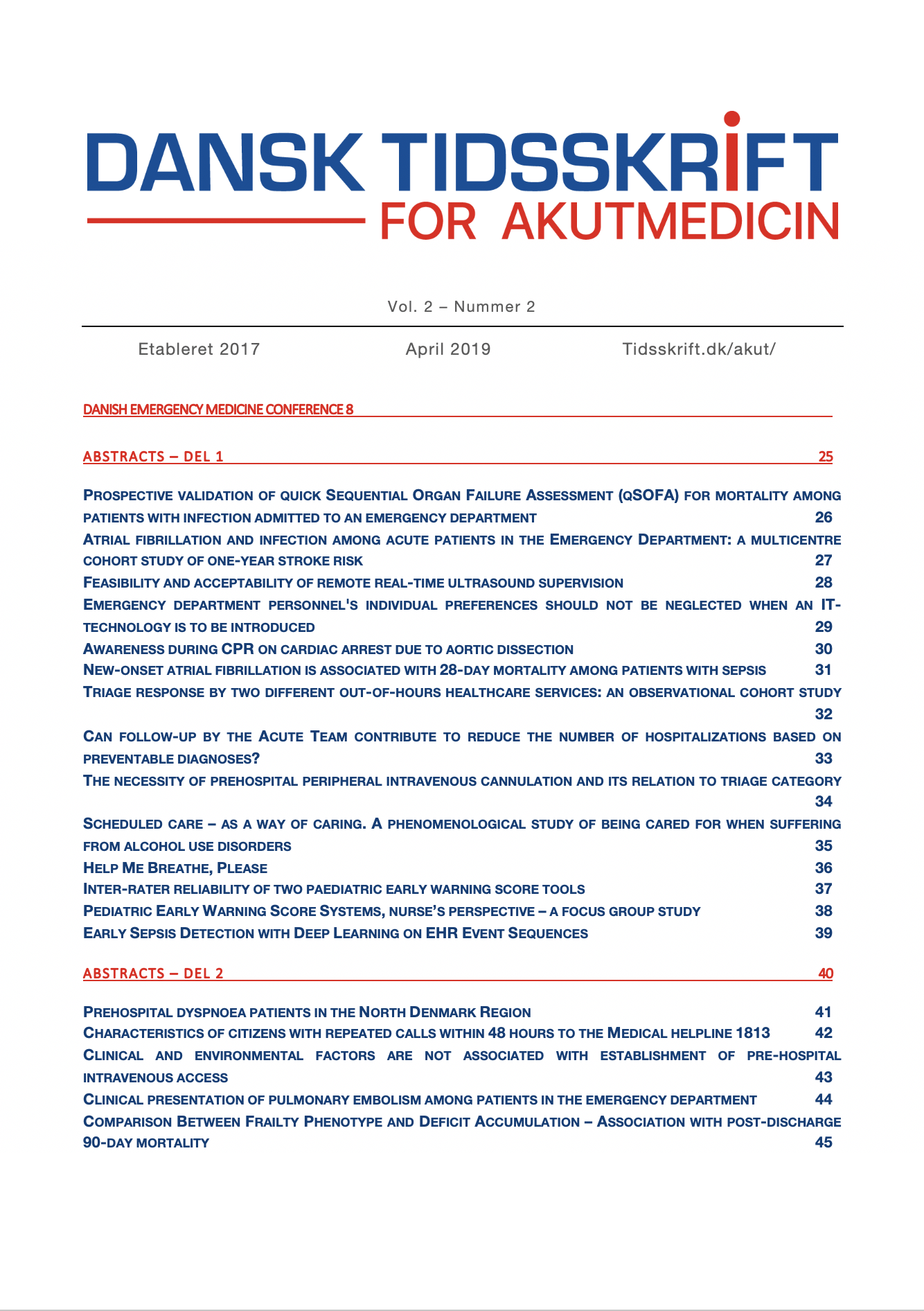Resumé
Background: Hand hygiene a cornerstone in infection prevention and control lacks quality in the EMS. Improvement is complicated and includes both individual and institutional aspects. However, little is known about EMS providers' perception and motivational factors leading to a high-quality hand hygiene. We aimed to describe 1) EMS providers’ perception on hand hygiene, 2) practical measures’ feasibility to improve compliance and 3) motivational factors related to high-quality hand hygiene among the cohort.
Methods: A cross-sectional, self-administered questionnaire consisting of 24 items (developed from WHOs Perception Survey for Health-Care Workers) provided information on demographics, improvement feasibility of practical measures, and various subjective, normative and control beliefs among EMS providers from Finland, Sweden, Denmark and Australia.
Results: Overall, 933 questionnaires were returned (response rate 15%). Most respondents were advanced-care providers, male and had > 5 years EMS experience. In total, 61% received hand hygiene training < 3 years ago, and 93% perceived hand hygiene a routine. Most perceived access to hand hygiene supplies, and training and education as feasible practical measures to improve overall hand hygiene compliance. The majority acknowledged the scope and severity of health-care associated infections and the preventive effect of hand hygiene. Overall, 55% believed that hand hygiene was an organizational priority, 26% that it was important to their managers, 36% to colleges, and 58% to patients. Also, 44% perceived their colleges' hand hygiene compliance high (≥ 80% compliance rate), 71% perceived hand hygiene relatively easy to perform. Organizational priority, peer pressure, and self-efficacy were separately associated with self-reported high-quality hand hygiene.
Conclusions: Hand hygiene supplies, simple and clear instructions, and training and education are highly warranted. Moreover, organizational priority, role models, and self-efficacy are motivational components with the potential to empower hand hygiene compliance within this cohort. Future interventional studies are needed to investigate the effect of a multimodal improvement strategy including both practical and behavioral aspects.
Licenseret under en Creative Commons Kreditering 4.0 International-licens (CC BY 4.0).
© Forfatterne.

